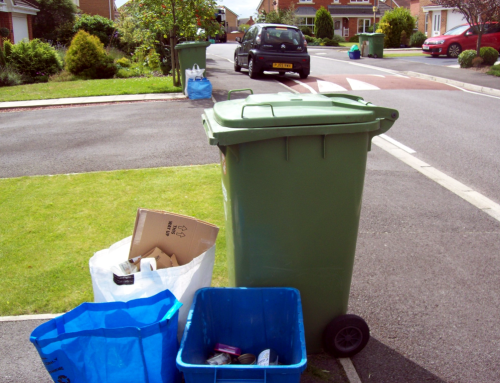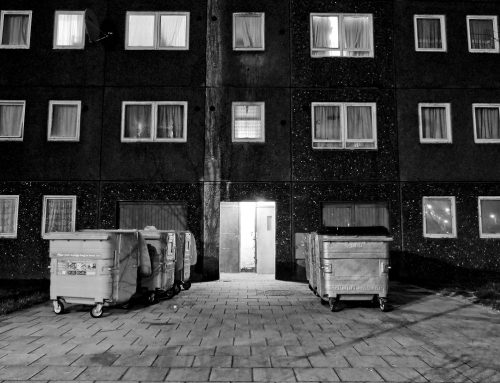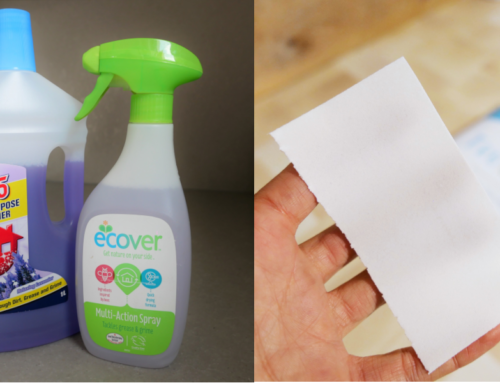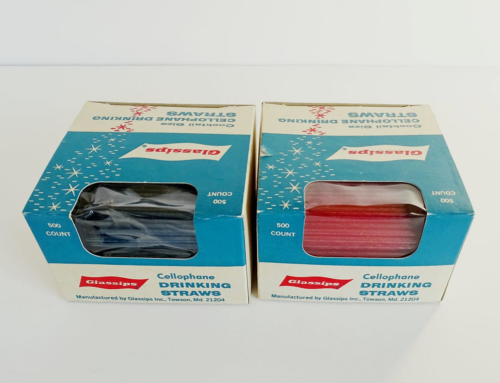by Peter Jones
8 minute read
When Defra decided that extended producer responsibility (EPR) for packaging should initially apply only to waste from households, it meant that the UK’s current system of producer responsibility would need to be kept going alongside it. However, the interaction between the two appears set to be problematic, especially for producers.
The introduction of EPR will mark a huge change in how producers contribute to the costs of managing packaging waste. Under the current system, producers must buy – directly or through a compliance scheme – evidence that a certain amount of packaging has been recycled, based on how much packaging they issue. If you placed 1,000 tonnes of plastic packaging on the market in 2022, you would have to acquire evidence that 610 tonnes had been recycled, as the recycling target for plastic packaging that year was 61%.
Taking notes
The evidence is created by registered reprocessors and exporters of recyclable material, in the form of packaging recovery notes (PRNs) and packaging export recovery notes (PERNs), which they generate when they reprocess material or export it for reprocessing. The recovery notes are sold at a market rate. When evidence is plentiful, the price is low – as it has usually been, because the efforts made by local authorities and businesses to recycle have generally been sufficient to exceed the targets. Producers have therefore not needed to take responsibility for much of the cost of managing packaging waste. According to Defra’s 2019 consultation on EPR:
“At most around 10% of costs are covered; but our analysis indicates that less than 7% of the costs of managing household packaging waste are covered by producers.”
PRNs clearly make only a minor contribution to household packaging costs, which is practically invisible to local authorities as it is wrapped up in material prices. Further, because PRN prices vary, they don’t provide a long-term incentive to change services. EPR, by contrast, is intended to ensure that producers contribute a sum roughly equal to the costs of managing in-scope packaging waste, while making sure that higher recycling targets are met.
Both the 2019 and 2021 consultations on EPR proposed that it would cover all packaging waste and thus replace the PRN system. However, Defra announced in its response to the 2021 consultation that commercial waste will be kept out of EPR’s scope (for a couple of years at least). The PRN system will therefore be retained to ensure producers support business recycling.
It would be practically impossible to distinguish between household and commercial packaging when material reaches reprocessors or exporters, so the PRN system can’t be limited to commercial waste. So, producers with EPR obligations will also have to keep paying for PRNs. The consultation response says:
“Producers will be required to purchase PRNs to demonstrate that they have met their recycling obligations; this will represent a partial cost payment for the recycling of both household and business waste, as it does at present.
Producers that place packaging on the market that is ‘likely to end up in households’ will also make a payment to the [EPR Scheme Administrator], to bring their contribution for the management of household packaging up to full net cost. This approach ensures that producers’ full net cost obligation is met for household waste, whilst allowing for some money to continue to go directly to reprocessors, thereby ensuring they are not paying twice.”
However, when one thinks about the financial flows involved, the following two goals are not compatible:
- Producers of packaging likely to end up in households pay only the costs of managing waste likely to end up in households.
- Local authorities receive 100% of the costs of an efficient and effective collection system.
Tracing paper
That’s because, while it’s difficult to say how much support local authorities receive from PRNs, it isn’t much. According to a 2016 report from the Advisory Committee on Packaging, councils receive almost no direct support from PRNs:
“There is no mechanism by which local authorities can bid for PRN funding, so it remains at the discretion of reprocessors and exporters to allocate the funds as they see fit according to market circumstances. This very rarely results in direct funding to local authorities so little visible direct benefit is occurring as a result.”
The report goes on to explain that:
“In the past, local authorities have been told that PRN money has supported the price of materials they sell to reprocessors. However details regarding the level of price support have not been widely known.”
The 2016 report provides a breakdown of PRN expenditure into categories such as “infrastructure/capacity”, “funding collection”, and “reduction in price and developing new markets for recyclate”. Similar statistics have since been published in annual Revenue Reports. The amount of money collected and how it is spent fluctuates each year. In 2022, £489m was collected, of which £104.6m (21.4%) was spent on “reduction in price and developing new markets”; in 2021, £140m was collected, with £31.6m (22.7%) spent on “price support and new market development”.
Expenditure on boosting the value of recycling is thus a small part of total PRN spend, and the percentage doesn’t increase dramatically when the amount of PRN income increases. This is the part of PRN money that is supposed to flow through to councils, but any spend on price support will affect prices paid for household and commercial recycling alike, so also supports commercial waste. Further, councils may have contracts in place that limit their exposure to material price risk, so will share any increases in material income with their contractor.
The government is proposing some changes to the categories under which PRN expenditure is reported that may make it clearer how much support local authorities ultimately receive, but it will always be difficult to trace the financial flows – and the reforms don’t change the fact that little money reaches councils.
Cash flow problem
Once EPR is introduced, there will be a new flow of funds, which is shown in the diagram below, using the 2021 PRN data as an illustration.
The small amount of material price support that flows through to local authorities works in the way that Defra’s consultation envisages. EPR payments to councils will cover the costs of managing household packaging waste, net of income from material sales; so, any PRN price support to material values will reduce the amount of money that producers of household packaging must pay into EPR. However, it is far from achieving what the EPR consultation promises: that producers should not pay twice for the costs of managing household packaging waste.
The EPR Impact Assessment says that producers of household packaging will pay EPR fees on top of their PRNs, appearing to assume (wrongly) that PRN money will largely pass through from reprocessors as price support to local authorities. It says that producers’ EPR costs:
“will be calculated as the costs of LA household and/or binned packaging waste management costs, minus the price paid by the reprocessor for the recyclate which incorporates the value of the PRN.” (p123-4)
However, it goes on to acknowledge that, for this to avoid producers overpaying:
“reprocessors must pass down the value of the PRN/PERNs they sell through paying higher prices for recyclate.”
Clearly, that is not what happens at present, and there don’t appear to be any proposed changes that would lead reprocessors to change the flow of PRN money. Consequently, producers of packaging waste that is likely to end up in households will have to pay for local authority collections for EPR, while seeing little of the cost offset by PRN money.
Money doesn’t talk?
That may be a minor issue if the UK is easily meeting its producer responsibility targets and PRNs are cheap. However, some of the packaging targets for 2025 look challenging to reach, especially with the delays to policies affecting household waste collections in England meaning there is little time for them to increase recycling yields. If the targets seem likely to be missed, PRN prices will rise – but what effect will that have?
The targets don’t appear to be split between household and commercial waste, so there’s no mechanism to make sure that each part of the waste system does its share. And since the new system is designed to ensure that PRN increases do not affect local authority funding, any PRN-driven boost in recycling would have to come from commercial waste.
That won’t be easy – whatever PRN price support makes its way through to commercial waste collectors won’t affect many existing commercial waste contracts: prices will generally have been set for at least a year ahead, and even new contracts prices are unlikely to change much based on a blip in material prices. PRN prices will be even more disconnected than they are at present from the ability to drive any substantial change in recycling behaviour.
In that scenario, producers may become very eager to see commercial waste brought within the scope of EPR and for the PRN system to be retired for good.
Featured image: Josh Appel, via Unsplash








Leave A Comment